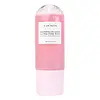What's inside
What's inside
 Key Ingredients
Key Ingredients

 Benefits
Benefits

 Concerns
Concerns

 Ingredients Side-by-side
Ingredients Side-by-side

Citrullus Lanatus Fruit Extract
Skin ConditioningCitrullus Lanatus Seed Oil
EmollientOryza Sativa Germ Oil
EmollientMoringa Oleifera Seed Extract
Skin ConditioningGlycine Soja Sterols
EmollientOryza Sativa Germ Extract
EmollientCucurbita Pepo Seed Oil
EmollientLithospermum Erythrorhizon Root Extract
Skin ConditioningAlkanna Tinctoria Root Extract
Skin ConditioningHyaluronic Acid
HumectantSoy Amino Acids
Skin ConditioningFructooligosaccharides
HumectantCentella Asiatica Extract
CleansingHibiscus Sabdariffa Flower Extract
Skin ConditioningNatto Gum
Vinegar
Sorbitan Oleate
EmulsifyingScutellaria Baicalensis Root Extract
AstringentPaeonia Suffruticosa Root Extract
Skin ProtectingGlycyrrhiza Glabra Root Extract
BleachingBeta-Glucan
Skin ConditioningBrassica Oleracea Capitata Leaf Extract
Skin ConditioningIpomoea Batatas Root Extract
Skin ConditioningParfum
MaskingCitrullus Lanatus Fruit Extract, Citrullus Lanatus Seed Oil, Oryza Sativa Germ Oil, Moringa Oleifera Seed Extract, Glycine Soja Sterols, Oryza Sativa Germ Extract, Cucurbita Pepo Seed Oil, Lithospermum Erythrorhizon Root Extract, Alkanna Tinctoria Root Extract, Hyaluronic Acid, Soy Amino Acids, Fructooligosaccharides, Centella Asiatica Extract, Hibiscus Sabdariffa Flower Extract, Natto Gum, Vinegar, Sorbitan Oleate, Scutellaria Baicalensis Root Extract, Paeonia Suffruticosa Root Extract, Glycyrrhiza Glabra Root Extract, Beta-Glucan, Brassica Oleracea Capitata Leaf Extract, Ipomoea Batatas Root Extract, Parfum
Water
Skin ConditioningCitrullus Lanatus Seed Oil
EmollientOryza Sativa Bran Oil
EmollientSimmondsia Chinensis Seed Oil
EmollientSorbitan Oleate
EmulsifyingCitrullus Lanatus Fruit Water
Skin ConditioningPhenoxyethanol
PreservativePhospholipids
Skin ConditioningSodium Benzoate
MaskingParfum
MaskingGlycine Soja Oil
EmollientDisodium EDTA
Ethylhexylglycerin
Skin ConditioningGlycolipids
Skin ConditioningTamarindus Indica Seed Polysaccharide
Skin ConditioningEclipta Prostrata Extract
Skin ConditioningGlycine Soja Sterols
EmollientBisabolol
MaskingPropanediol
SolventMelia Azadirachta Leaf Extract
Skin ConditioningMoringa Oleifera Seed Oil
EmollientRaphanus Sativus Root Extract
AstringentMaltodextrin
AbsorbentSodium Hyaluronate
HumectantHibiscus Sabdariffa Flower Extract
Skin ConditioningCucurbita Pepo Seed Oil
EmollientWater, Citrullus Lanatus Seed Oil, Oryza Sativa Bran Oil, Simmondsia Chinensis Seed Oil, Sorbitan Oleate, Citrullus Lanatus Fruit Water, Phenoxyethanol, Phospholipids, Sodium Benzoate, Parfum, Glycine Soja Oil, Disodium EDTA, Ethylhexylglycerin, Glycolipids, Tamarindus Indica Seed Polysaccharide, Eclipta Prostrata Extract, Glycine Soja Sterols, Bisabolol, Propanediol, Melia Azadirachta Leaf Extract, Moringa Oleifera Seed Oil, Raphanus Sativus Root Extract, Maltodextrin, Sodium Hyaluronate, Hibiscus Sabdariffa Flower Extract, Cucurbita Pepo Seed Oil
 Reviews
Reviews

Alternatives
Ingredients Explained
These ingredients are found in both products.
Ingredients higher up in an ingredient list are typically present in a larger amount.
Citrullus Lanatus Seed Oil is made by expressing watermelon seeds. It is a non-fragrant oil with antioxidant and hydrating properties.
Watermelon seed oil contains a high percentage of linoleic acid and other fatty acids. These fatty acids make it a great skin hydrator. This ingredient may not be fungal-acne safe.
Cucurbita Pepo Seed oil comes from the field pumpkin, including winter squash and the traditional orange pumpkin we see in Autumn.
Pumpkin seed oil is rich in vitamin E and plenty of fatty acids such as linoleic acids. Pumpkin seeds also have zinc and cartenoids.
Linoleic acid helps moisturize your skin as an emollient. Emollients act as a thin film to prevent moisture from escaping.
Cartenoids are an antioxidant. Antioxidants protect your skin against external damage. They also give pumpkins their classic orange color.
Fun fact: Pumpkins were first domesticated in Southern Mexico about 10,000 years ago.
Learn more about Cucurbita Pepo Seed OilGlycine Soja Sterols is derived from the soybean plant. Sterols are an organic compound and technically an alcohol.
Unlike solvent alcohols, glycine soja sterols have emollient properties and help hydrate the skin.
This ingredient may not be Malassezia folliculitis, or fungal-acne safe.
Sterols can be found in plants, animals, and fungi.
Learn more about Glycine Soja SterolsThis extract comes from the Roselle flower, or Hibiscus Sabdariffa. Roselle flowers are rich in antioxidants.
Studies found the antioxidants in Roselle flowers to potentially help reduce UV-B damage.
Parfum is a catch-all term for an ingredient or more that is used to give a scent to products.
Also called "fragrance", this ingredient can be a blend of hundreds of chemicals or plant oils. This means every product with "fragrance" or "parfum" in the ingredients list is a different mixture.
For instance, Habanolide is a proprietary trade name for a specific aroma chemical. When used as a fragrance ingredient in cosmetics, most aroma chemicals fall under the broad labeling category of “FRAGRANCE” or “PARFUM” according to EU and US regulations.
The term 'parfum' or 'fragrance' is not regulated in many countries. In many cases, it is up to the brand to define this term.
For instance, many brands choose to label themselves as "fragrance-free" because they are not using synthetic fragrances. However, their products may still contain ingredients such as essential oils that are considered a fragrance by INCI standards.
One example is Calendula flower extract. Calendula is an essential oil that still imparts a scent or 'fragrance'.
Depending on the blend, the ingredients in the mixture can cause allergies and sensitivities on the skin. Some ingredients that are known EU allergens include linalool and citronellol.
Parfum can also be used to mask or cover an unpleasant scent.
The bottom line is: not all fragrances/parfum/ingredients are created equally. If you are worried about fragrances, we recommend taking a closer look at an ingredient. And of course, we always recommend speaking with a professional.
Learn more about ParfumSorbitan Oleate is created from compounds in oleic acid and sorbitol.
It is used to stabilize a product by preventing ingredients from separating. Emulsifiers help keep ingredients together, such as oils and water.
According to a manufacturer, the ingredient Sorbitan Monooleate shares an INCI name with this one.
Sorbitan Oleate may not be fungal acne safe. It can also worsen oily skin.
Learn more about Sorbitan Oleate